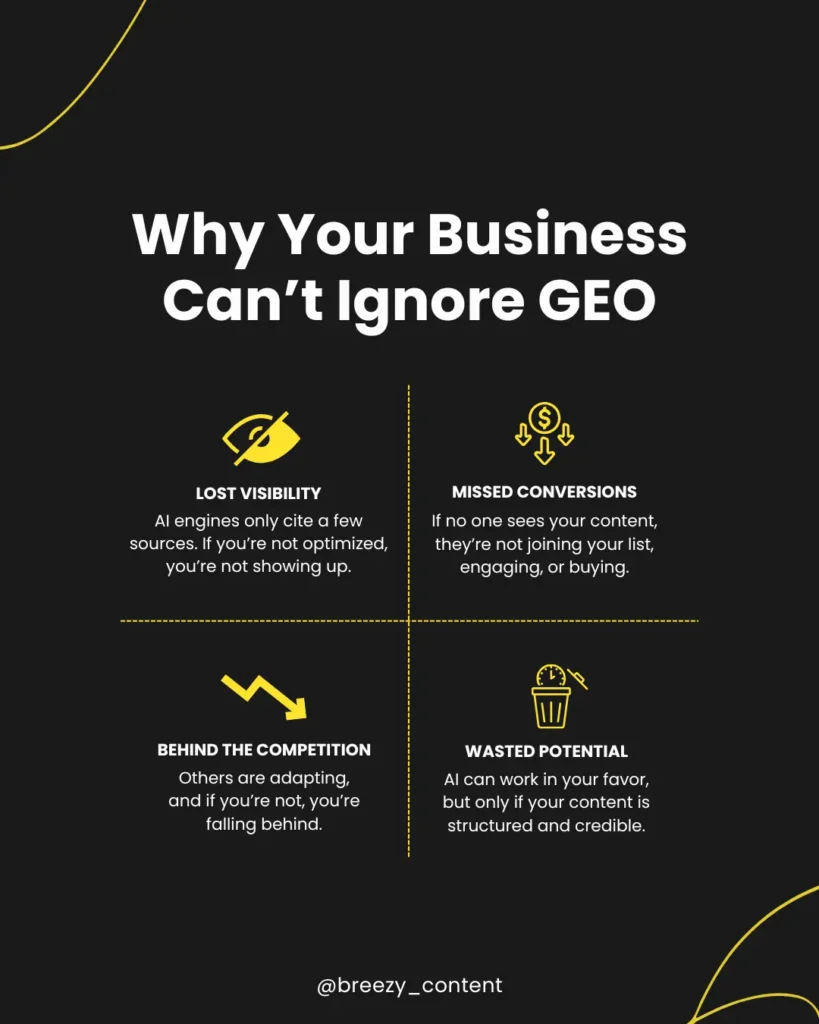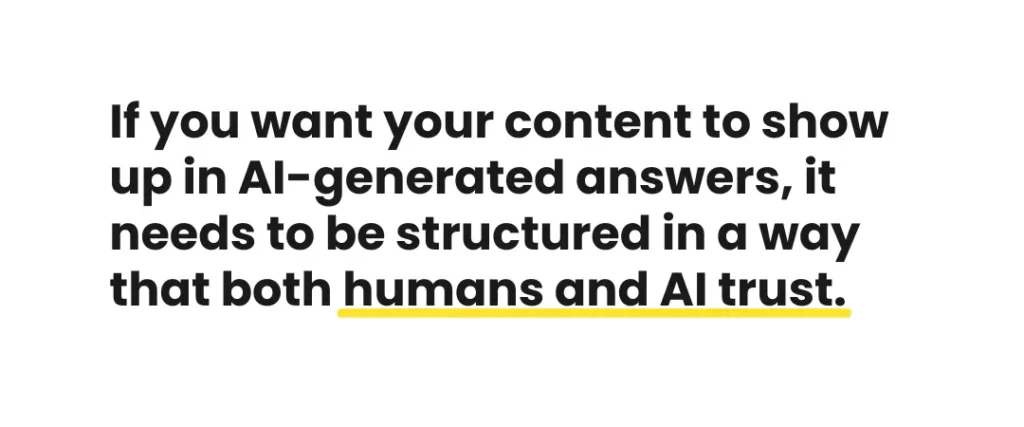
AI is completely reshaping how we run our businesses, reach clients, and market online. Traditional SEO isn’t dead by any means but it also isn’t enough on its own anymore. AI-powered search engines like Google’s Search Generative Experience (SGE), ChatGPT, and Perplexity AI are changing how people find and consume information. If we want our businesses to stay visible and competitive, we need to optimize not just for search engines but for generative engines.That’s where Generative Engine Optimization (GEO) comes in. GEO is all about tailoring your content so AI-driven engines can easily find it, trust it, and recommend it to the right people. Below, we’ll break down what GEO is, why it’s essential for your business, and practical ways to improve your GEO strategy right away.
Generative engines (think Google’s AI overview, ChatGPT, or Perplexity) don’t just list websites. They synthesize answers by pulling from multiple trusted sources and presenting summarized, conversational responses.
GEO is the practice of optimizing your content so it’s selected, cited, and surfaced by these AI-driven results. This goes beyond keywords and meta tags. This method builds credibility, creating clearly structured information, and helps AI understand why your content should be included when it builds answers.

AI search isn’t slowing down. According to HubSpot and Search Engine Journal, more than 60% of online searches now involve some level of AI assistance, and that number is expected to climb as AI assistants become the default for browsing. If you’re not optimizing for these engines, you’re already losing potential leads.
Wasted potential. AI can amplify your reach if used strategically, but only if your content is structured and trusted enough to be surfaced.

AI rewards content that it can verify. Make sure every claim, stat, or quote links back to a credible, verifiable source. Use proper citations, add author bylines, and link to your own original data or insights.
Cut through the noise of generic AI-written posts by backing up your points with current, reputable data (from sources like industry studies or government reports). AI engines prefer up-to-date, evidence-backed content for their summaries.
Quoting subject matter experts or well-known figures builds trust with readers and AI. Include links to the original interviews or sources so engines can verify authenticity.

Break up long paragraphs. Use descriptive headings, bullet points, FAQs, and concise answers that AI can easily parse and feature. This also improves readability for human audiences, keeping them engaged.
Keyword stuffing has been dead for a long time. Instead:
It’s not just about ranking for keywords anymore, but about matching why people are searching.
Example: A home storage company might think “increase storage” is a great phrase, but most searchers using that question are looking to clear phone or computer space, not buy a shed. Dig into how your target audience phrases things and optimize for intent, not just terms.
Generic terms drown. Use specific industry jargon, product names, or technical terms where relevant. This not only helps AI match your content to more precise questions but also signals credibility.
How you present content matters as much as what you write:

AI tools can speed up your content process, but you cannot rely on raw AI output. AI-written blogs alone rarely rank because they lack brand voice, nuance, and human originality. Use AI for brainstorming, drafts, or repurposing content, but always edit heavily, make it feel like your brand, and add your unique insights.
Generative search is here to stay, and it’s only going to get more dominant. The businesses that learn to work with AI search engines now will be the ones customers actually find.
Feeling overwhelmed by all this? We get it. Our team at Breezy helps businesses like yours build and implement GEO-friendly content strategies that keep you competitive and visible, even as AI evolves. Let’s talk about your strategy.
Savannah Abney is the Co-Founder and CEO of The Breezy Company. With over 6 years of experience, she specializes in content strategy, video marketing, and brand storytelling-helping small businesses grow through a strong digital reputation.
Read more articles by Savannah Abney